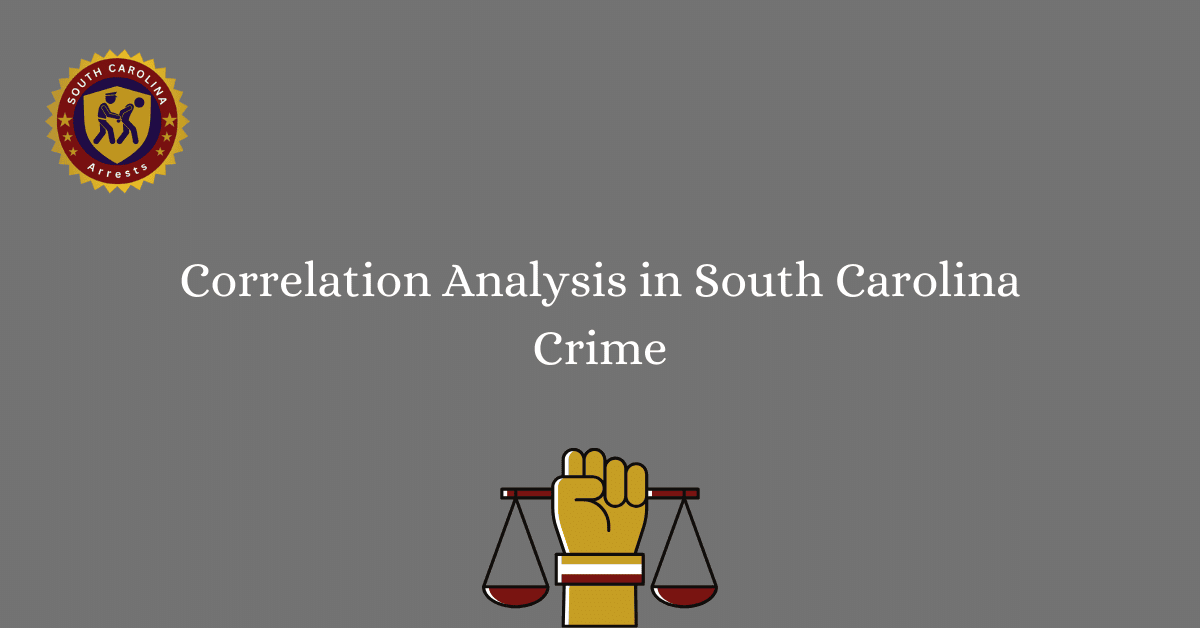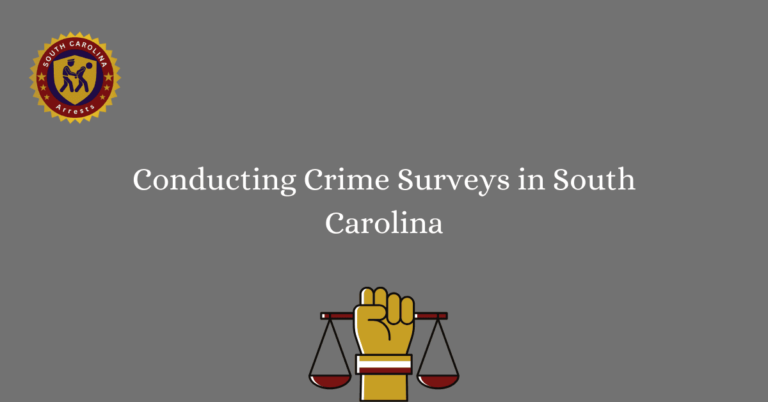Correlation Analysis in South Carolina Crime
Correlation analysis in South Carolina crime reveals intriguing patterns and connections within criminal activities across the state. By examining the relationships between various crime types and locations, valuable insights can be gained to aid in law enforcement strategies and public safety measures. Understanding these correlations can potentially lead to more targeted interventions and prevention efforts to combat crime effectively.
Through in-depth analysis of crime data in South Carolina, key correlations can be identified, shedding light on potential factors influencing criminal behaviors and trends. By delving into the interconnected nature of different crimes and their geographical distribution, law enforcement agencies and policymakers can better allocate resources and develop proactive measures to address and reduce criminal activities within the state.
Unraveling Crime Trends: Correlation in South Carolina
Crime rates in South Carolina have been a topic of concern for both residents and policymakers. Through correlation analysis, researchers have been able to uncover patterns in criminal activities that provide valuable insights into potential risk factors and trends. By examining statistical relationships, we can better understand the dynamics of crime in the state and develop targeted strategies for crime reduction.
Uncovering Patterns in Criminal Activities
Correlation analysis in South Carolina crime data has revealed interesting patterns in criminal activities. By analyzing data on different types of crimes, their frequency, and geographic distribution, researchers have been able to identify clusters of criminal behavior. This information can help law enforcement agencies prioritize their resources and focus on areas with higher crime rates.
Identifying Potential Risk Factors and Trends
One of the key benefits of correlation analysis is the ability to identify potential risk factors for crime. By examining the relationship between various socio-economic variables and crime rates, researchers can pinpoint factors that may contribute to criminal behavior. This information can be used to develop targeted interventions aimed at addressing these risk factors and preventing crime.
Developing Targeted Strategies for Crime Reduction
Correlation analysis can also help in developing targeted strategies for crime reduction. By identifying correlations between different variables and crime rates, policymakers can design interventions that are tailored to specific communities or populations. This approach can be more effective than one-size-fits-all policies and can lead to more sustainable reductions in crime rates.
Role of Data-Driven Approaches in Policy Making
Data-driven approaches play a crucial role in policy making when it comes to addressing crime. By using correlation analysis to inform policy decisions, policymakers can ensure that their interventions are based on empirical evidence rather than intuition or guesswork. This can lead to more effective and efficient policies that have a real impact on crime rates.
Enhancing Safety and Security Measures
Correlation analysis can also help in enhancing safety and security measures in South Carolina. By identifying correlations between crime rates and other variables such as police presence or community outreach programs, law enforcement agencies can make informed decisions about resource allocation. This can lead to safer communities and more effective crime prevention strategies.
Insights for Law Enforcement Agencies and Policymakers
Correlation analysis provides valuable insights for law enforcement agencies and policymakers in South Carolina. By understanding the statistical relationships between different variables and crime rates, these stakeholders can make more informed decisions about resource allocation and policy development. This can ultimately lead to more effective crime prevention strategies and safer communities.
Community-Based Interventions for Crime Prevention
One of the key applications of correlation analysis in South Carolina crime data is the development of community-based interventions for crime prevention. By identifying correlations between crime rates and community characteristics, policymakers can design interventions that are tailored to specific neighborhoods or populations. This approach can help build trust between law enforcement agencies and communities, leading to more effective crime prevention efforts.
Shaping Evidence-Based Initiatives for Crime Reduction
Correlation analysis plays a crucial role in shaping evidence-based initiatives for crime reduction in South Carolina. By analyzing the relationships between different variables and crime rates, policymakers can design initiatives that are based on solid empirical evidence. This approach can lead to more sustainable reductions in crime rates and a safer environment for all residents.
Frequently Asked Questions
Our Frequently Asked Questions section aims to address common queries and provide detailed explanations on the topic of Correlation Analysis in SC Crime. Browse through the FAQs to enhance your understanding of this subject.
What is Correlation Analysis?
Correlation analysis is a statistical technique used to determine the relationship between two variables. In the context of SC Crime, it helps to identify any potential connections between different factors and crime rates.
How is Correlation Analysis useful in analyzing SC Crime?
Correlation analysis in SC Crime can provide valuable insights into the factors that may influence crime rates, such as socioeconomic conditions, demographics, and law enforcement policies. By examining correlations, researchers can identify patterns and potential causes of crime.
What are the different types of correlations that can be observed in SC Crime?
There are three main types of correlations that can be observed in SC Crime: positive correlation, negative correlation, and no correlation. Positive correlation indicates that as one variable increases, the other variable also increases. Negative correlation, on the other hand, suggests that as one variable increases, the other variable decreases. No correlation means that there is no relationship between the two variables.
How can Correlation Analysis help in crime prevention strategies?
By identifying significant correlations in SC Crime data, policymakers and law enforcement agencies can tailor their crime prevention strategies more effectively. Understanding the factors that contribute to crime rates can help in implementing targeted interventions and addressing root causes of criminal behavior.
What are the limitations of Correlation Analysis in studying SC Crime?
While correlation analysis can provide valuable insights, it is essential to remember that correlation does not imply causation. Just because two variables are correlated does not mean that one causes the other. Additionally, other factors not considered in the analysis may influence crime rates, leading to potential confounding variables.
How to make sure SC crime studies’ correlation analysis is accurate and reliable?
To ensure the accuracy and reliability of correlation analysis results in SC Crime studies, researchers should use high-quality data, consider potential confounding variables, and employ appropriate statistical methods. It is crucial to interpret correlations cautiously and avoid making causal claims without further evidence.







